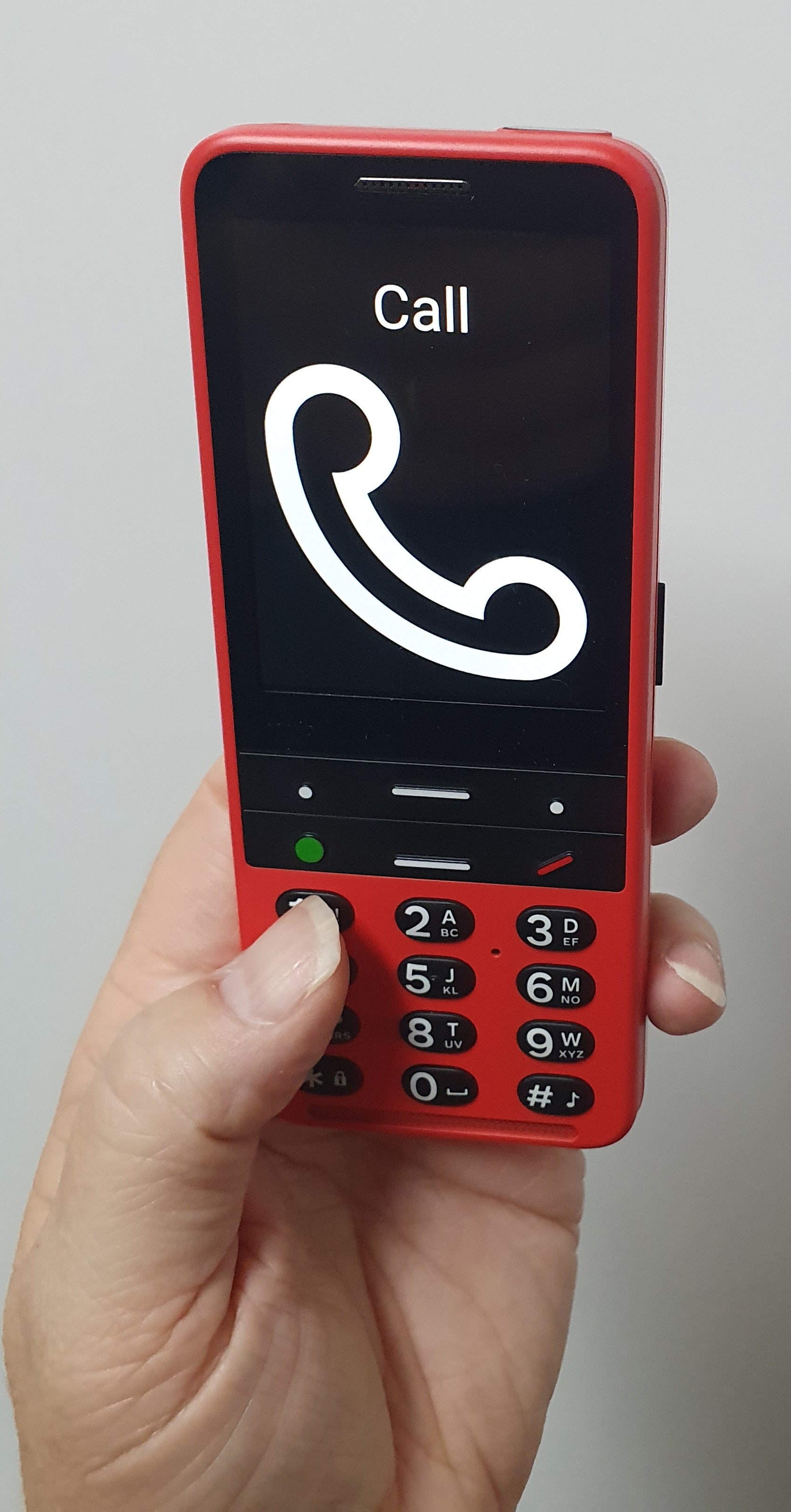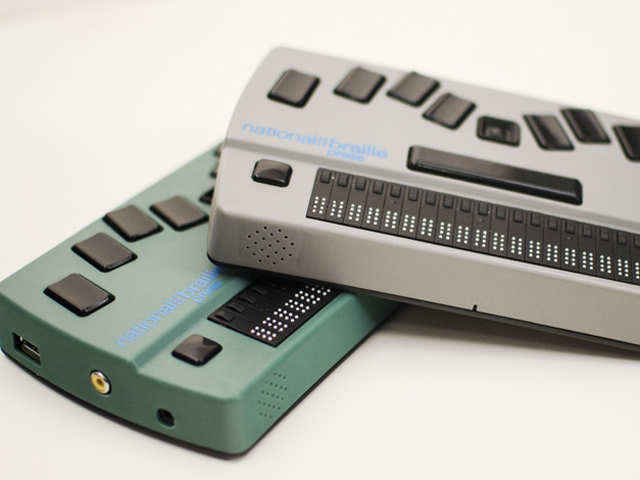Speech-to-Text Devices for Low Vision: Closing the Communication Gap
Speech-to-Text Devices for Low Vision: Closing the Communication Gap
Blog Article
Discover Ingenious Tools Created for the Visually Impaired
The growth of innovative devices for the aesthetically damaged stands for a considerable innovation in accessibility and independence. Technologies such as clever glasses with AI abilities and mobile applications made to provide auditory summaries are reshaping day-to-day experiences for individuals. In addition, wearable tools that utilize haptic comments boost environmental awareness, while contemporary Braille developments offer new ways to involve with message. As these tools continue to progress, their influence on the lives of those with aesthetic problems elevates essential questions concerning the future of inclusivity and freedom in numerous aspects of life. What lies ahead in this technological landscape?
Smart Glasses for Navigation

Smart glasses made for navigation are reinventing the means aesthetically damaged people connect with their setting. These sophisticated tools utilize a combination of video camera innovation, synthetic knowledge, and acoustic responses to supply real-time info concerning environments. By employing obstacle detection systems, clever glasses can alert individuals to potential hazards, allowing much safer mobility in both familiar and unfamiliar settings.
The assimilation of GPS technology even more boosts navigation abilities, enabling users to obtain auditory directions as they relocate. This hands-free approach not only cultivates independence yet likewise empowers visually impaired individuals to browse city landscapes with boosted confidence. Additionally, many wise glasses are outfitted with features that identify sites and road indicators, giving contextual details that improves the individual experience.
Furthermore, the growth of these tools is constantly advancing, with business functioning to improve the accuracy of object recognition and increase the range of navigational features. As wise glasses become extra available and cost effective, they hold the potential to considerably transform every day life for aesthetically impaired individuals. Eventually, these cutting-edge devices represent an essential step toward inclusivity, offering boosted flexibility and a greater feeling of freedom for individuals browsing the globe around them.

Mobile Apps for Daily Living
How can mobile applications improve the day-to-days live of aesthetically damaged people? Mobile applications are revolutionizing the means aesthetically impaired individuals browse their environments, take care of day-to-day tasks, and access info. These applications offer crucial assistance via different functionalities, fostering freedom and boosting lifestyle.
A number of ingenious mobile apps are made particularly for day-to-day living. For example, apps like Be My Eyes link visually damaged users with sighted volunteers using video clip calls, allowing them to obtain real-time help with jobs such as reading tags or browsing unknown rooms. Seeing AI, created by Microsoft, uses fabricated knowledge to describe surroundings, read message, and recognize items, successfully transforming a smartphone into a powerful tool for day-to-day help.
Additionally, navigation applications tailored for the aesthetically damaged, such as Aira and BlindSquare, offer audio-based directions and ecological information, allowing customers to traverse their environments safely and with confidence. Past navigation and prompt assistance, mobile applications likewise sustain company and task monitoring, with features that help users set pointers, create order of business, and track appointments. In recap, mobile applications act as vital resources, empowering visually impaired people to lead even more independent and meeting lives.
Wearable Technologies for Help
Empowerment via modern technology is increasingly evident in the realm of wearable tools made to aid visually impaired people. These ingenious tools integrate effortlessly into day-to-day life, boosting navigation and providing necessary comments to investigate this site individuals. Wise glasses equipped with video cameras can acknowledge faces and read text out loud, enabling customers to engage even more confidently in social and professional settings.
Another noteworthy improvement their explanation is the usage of haptic responses systems in wearable gadgets. These systems utilize vibrations or other responsive signals to convey details concerning the individual's environment, such as barriers or modifications in terrain, improving wheelchair and safety. Wearable modern technologies additionally consist of wristbands that attach to smart devices, alerting individuals to notifications with refined vibrations, therefore boosting connection without dependence on aesthetic cues.
As these modern technologies proceed to advance, they are not only enhancing independence for visually impaired people yet additionally promoting a greater feeling of addition in society. By linking the gap in between obstacles dealt with in everyday living and the possibility for autonomy, wearable technologies work as crucial devices in the pursuit for equality and empowerment for those with visual problems.
Sound Summary Tools
Audio summary devices play an essential function in boosting availability for visually impaired people, supplying them with the ability to engage with aesthetic media. Braille displays and notetakers. These tools provide narrated summaries of essential visual elements in films, tv programs, and live performances, making sure that customers can fully comprehend the context and emotions communicated with visuals
Audio description can be integrated right into numerous platforms, including streaming solutions, cinema testings, and live movie theater. Numerous popular streaming services currently include audio description as an availability function, allowing visitors to select it quickly. Along with mainstream media, specialized applications likewise exist, supplying audio summaries for art events, galleries, and various other cultural events.
The efficiency of audio summary rests on the skill of the narrators, that need to communicate visual details succinctly without interfering with the initial audio. Innovations in this field are likewise leading the way for more personalized experiences, where customers can readjust the degree of detail and pacing according to their preferences.
Braille Innovations and Gadgets
Braille developments and gadgets have actually considerably changed the means visually damaged individuals connect with message and details. Modern improvements have actually brought about the growth of functional tools that enhance proficiency and independence among customers. Significantly, Braille transparent glasses display technologies have advanced, permitting dynamic analysis experiences. These tools convert digital text right into Braille, enabling users to access a huge variety of information on tablets, smartphones, and computer systems.
Additionally, mobile Braille notetakers integrate typical Braille input with modern performances, assisting in note-taking, scheduling, and paper modifying on the move. Screen readers for the blind. These portable tools commonly feature text-to-speech capabilities, bridging the void between Braille and auditory info
In addition, cutting-edge Braille printers have emerged, enabling users to create Braille labels, papers, and instructional materials efficiently. This accessibility fosters better engagement in specialist and educational environments, eventually promoting inclusivity.
Additionally, research study into clever Braille technologies remains to broaden. Tools that incorporate synthetic intelligence are being explored to offer real-time navigation support and contextual details, enhancing the customer experience in varied settings. In general, these advancements mirror a commitment to encouraging visually damaged people through technology, guaranteeing they can quickly gain access to and engage with the world around them.

Final Thought
The advancement of cutting-edge tools for the visually damaged considerably enhances freedom and high quality of life. Smart glasses, mobile applications, wearable technologies, audio summary devices, and Braille technologies collectively equip individuals by giving crucial navigating support, ecological recognition, and enhanced analysis experiences. These modern technologies not just foster better inclusion but additionally advertise freedom in everyday tasks, eventually adding to a much more obtainable and equitable society for visually damaged individuals. Proceeded development in this area holds guarantee for further enhancements.
As clever glasses end up being much more cost effective and easily accessible, they hold the prospective to considerably change daily life for visually damaged users. Mobile applications are transforming the method visually damaged individuals navigate their settings, take care of everyday tasks, and gain access to info. Apps like Be My Eyes link aesthetically damaged individuals with sighted volunteers through video clip calls, allowing them to get real-time help with jobs such as reading labels or navigating unfamiliar rooms.Additionally, navigation apps tailored for the aesthetically impaired, such as Aira and BlindSquare, supply audio-based instructions and ecological information, making it possible for individuals to traverse their surroundings securely and confidently.The advancement of innovative devices for the visually impaired dramatically enhances freedom and high quality of life.
Report this page